Six Seconds Co-Founder/President, Anabel Jensen, Speaks at NAIS Conference
Yesterday, I shared the stage with one of my heroes—Denise Clark Pope, author of Doing School: How we are creating a generation of stressed out, materialistic, and miseducated students. She is also co-author of the recently released Overloaded and Unprepared: Strategies for Healthy Schools and Healthy, Successful Kids. When writing, Doing School, Denise went into one of the prominent Bay Area schools that claimed to be student focused. She assumed the role of a high school student, and discovered the reality of what was happening behind the scenes. I still love that book because of the documented insight into how students are pushing themselves too hard. They may appear competent and capable on the outside, but inside they are falling apart. Her latest book emphasizes that the current approach in education is not improving academics (critical and creative thinking) for our students; instead, we are just demanding more and more work.
The setting for our discussion was the National Association of Independent Schools (NAIS) Conference being held at the Moscone Center in San Francisco. The session was lively and energetic with skillful moderating by Sarah Savage and an introduction by Dave Clune, CEO of the Educational Records Bureau.
The purpose of the session was to present the point of view that SEL skills will help children to be better problem solvers, more efficient decision makers, as well as allow the addition of creativity and innovation skills to that pile of things they are learning. Ultimately, both Denise and I want the student to be thriving vs. surviving.
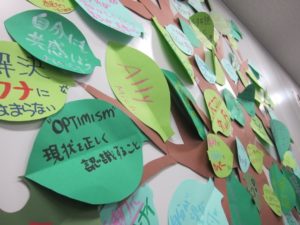 We explored a variety of questions:
We explored a variety of questions:
1. What is the most important non-cognitive SEL trait for academic, career, and life success?
I could not resist beginning my answer with data from Domasio (1999), which confirms that emotional intelligence traits are not “non-cognitive”. In fact, emotion is always present in the brain. The only time emotion would not be seen is if the individual is unconscious or dead. Denise chimed in by specifying that SEl characteristic should be labeled “super-traits.” I agree.
I think the most important competency is to “exercise optimism.” However, I also acknowledged that others at Six Seconds might identify “apply consequential thinking” or “purse noble goals”.
My reason for optimism includes the statistical data for the number of daily adversities with which we each must contend—the research that indicates we encounter seventeen adversities per day. For example, we must be prepared for not being invited to the celebratory dinner, the stubbed toe, and the long line at the grocery story. I use TIE (acronym for temporary, isolated, and effort) to deal with these challenges.
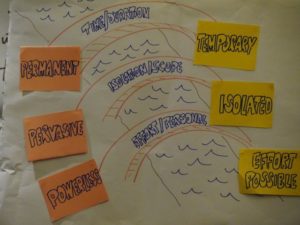 Therefore, I tell myself to remember that the situation will not last forever, only one aspect of my life is involved, and with effort on my part–either the event or the outcome can be adjusted. For example, I could celebrate with one special friend; I could be thankful that I did not break a leg; and, the extra time in the long line I can use to make a new friend, strike a note for emotional intelligence, or do a conscious act of kindness.
Therefore, I tell myself to remember that the situation will not last forever, only one aspect of my life is involved, and with effort on my part–either the event or the outcome can be adjusted. For example, I could celebrate with one special friend; I could be thankful that I did not break a leg; and, the extra time in the long line I can use to make a new friend, strike a note for emotional intelligence, or do a conscious act of kindness.
Current research (Durlak, 2011) demonstrates that SEL programs can help students improve academic achievement, strengthen or improve tenuous relationships, and reduce the possibility of participating in risky behaviors. In my opinion, optimism is the antidote for anxiety, stress, and depression. Unfortunately, one out of six teenagers contemplate suicide. Without a doubt, every child worldwide should be inoculated.
Denise Clark Pope brought up the importance of self-awareness or self-knowledge and how this data helps children and youth to make better decisions. I concur. Self-reflection is the process by which we make sense of our lives and determine if we are making progress. I shared that at the end of each day I fill out a self-analysis of items that are important to me. I give myself a grade of 1-10 on a scale of 10. Here are some of the questions that I ask myself:
—Did I make progress on my noble goal?
—Did I practice my optimism skills (TIE)?
—Did I say/text/do something encouraging for my son in L.A.?
—Did I drink plenty of water, eat healthy, and exercise?
—Did I avoid destructive comments about others?
—Did I forgive others for errors?
—Did I do a conscious act of kindness for a stranger? *
2. How important is parent involvement?
Denise and I emphatically agree upon the importance of parent collaboration. On a scale of 1-10 it is a minimum of 10, more like likely a 15 or even a 20. The importance of cooperation must be underscored and highlighted.
I am frustrated by the dichotomy between parents and educators. I wish human beings did not like to blame others for perceived problems. If you sit in a teachers’ lounge you will probably hear teachers blaming parents. And, a similar conversation with parents blaming teachers often occurs in the parking lots of schools. I want to come from the position that parents and teachers working together can help the child more than either working alone. We need to remind ourselves that the accusatory position results in a boat that is being rowed alternately by each side. This creates a series of circles—first clockwise and then counter-clockwise with the boat making no progress at all.
Children pop out curious and they want to learn. We need to work together as administrators, teachers, and parents because we have the same objective—the growth of the child. We all have knowledge in a different domain and setting. It is by integrating these pieces of information that we can discover and identify the necessary steps.
Moreover, parents are critically important as role models. Current research on mirror neurons backs up the previously known and often reported data—children only do 30% of what they hear us saying, but 70% of what they see us doing. New data says that teenagers without appropriate parental role models are 67% less likely to get a job and to stay employed. They are also 50% more likely to use drugs and 42% more likely to attempt suicide.
 3.Are there schools employing a fully integrated program?
3.Are there schools employing a fully integrated program?
The idea for this panel began because teachers at Synapse had been working with students to produce self-soothing techniques when it came to doing standardized tests. The result was that our ERB scores went up significantly. Previously, for example, students would come to a problem and then get panicky because they did not comprehend the immediate approach or solution, and they would have a mini-meltdown wasting time and energy. Instead, the teacher taught the students strategies, such as “take a deep breath, or have a drink of water, or practice optimism. We even encouraged the students to make laminated messages for themselves to post on their desks. Some read, “When I get upset, I think about………(fill in the blank) to make things better.”
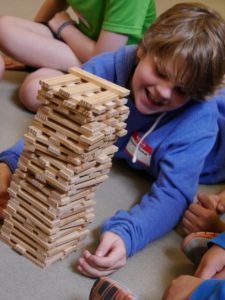 Synapse’s mission is to build change makers. We identify change makers as children who are curious, who think there is no limit to what might be accomplished, and essentially can see no difference between work and play.
Synapse’s mission is to build change makers. We identify change makers as children who are curious, who think there is no limit to what might be accomplished, and essentially can see no difference between work and play.
Synapse started approximately eight years ago with five kids in a gazebo within the backyard of one of the parents. We now have 200 students. I think one of the major reasons for this growth is our emphasis on three pillars, with the first being integrated social and emotional learning. We begin that integration with the admissions process. Parents must commit to the importance of EQ being first—followed by constructivism and innovation.
In addition, we use a variety of SEL diagnostic tools including the SEI (Six Seconds’ social and emotional intelligence self-assessment) for all teachers, administrators, and staff. The SEI-YV is a similar tool designed for children seven years of age and older. We also employ a climate survey, as well as 360-degree inventories to provide additional feedback to intensify growth.
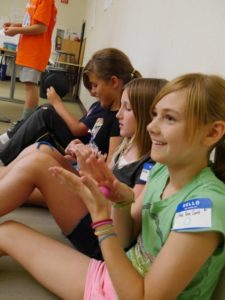 Then once a week we have Self-Science classes for the specific purpose of teaching skills, strategies, and processes for building social/emotional awareness and management for the students. In addition, the teachers are always on the lookout for ways to call attention to the power of the competencies in history, English, science, and math. And, the administrators help the teachers. Nor, are the parents neglected. We have evening classes and morning classes for them as well. It is a nested process and procedure with the ultimate goal of involvement by everyone in the community.
Then once a week we have Self-Science classes for the specific purpose of teaching skills, strategies, and processes for building social/emotional awareness and management for the students. In addition, the teachers are always on the lookout for ways to call attention to the power of the competencies in history, English, science, and math. And, the administrators help the teachers. Nor, are the parents neglected. We have evening classes and morning classes for them as well. It is a nested process and procedure with the ultimate goal of involvement by everyone in the community.
My own noble goal…
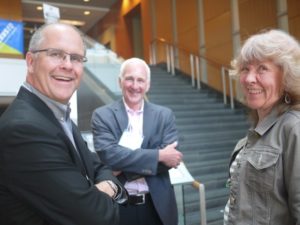 I am committed to one billion EQ practitioners by 2039; I will be one hundred years old in that year. At that time, there would be one EQ individual utilizing emotional/social intelligence competencies for every seven people in the world. As a result, I think the following can be expected:
I am committed to one billion EQ practitioners by 2039; I will be one hundred years old in that year. At that time, there would be one EQ individual utilizing emotional/social intelligence competencies for every seven people in the world. As a result, I think the following can be expected:
—there will be more children going to bed with full tummies;
—there will be less miles to walk in Africa in order to get clean water;
—people will automatically practice ecological intelligence; and
—there will be multiple and deliberate acts of kindness by all of us every day.
Join the emotion revolution!
__________________
* For a complete list of the 20 or so items, write to [email protected] and I will send you a copy.
- 87 Ways to Be Kind and Loving - June 27, 2022
- 13 Tips to Reduce Stress & Anxiety During Covid-19 - April 8, 2021
- 6 Tips for Making the Best of Your Reality - October 12, 2020


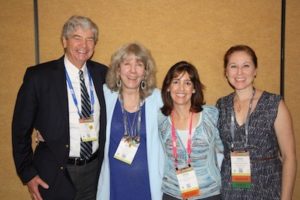
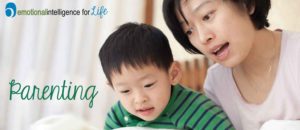
Great post, Anabel! Wonderful shout-out on Optimism, the SEL competency all students and adults should develop and your fabulous description of Synapse School’s program, a venerable model of integrated SEL that many others have followed. For learning more about schools integrating EQ, your readers can attend our Six Seconds webinar this Friday at 8AM Pacific: Creating an EQ school: Learning from Champions.http://www.eventbrite.com/e/creating-an-eq-school-learning-from-champions-webinar-tickets-21477998271?aff=rss